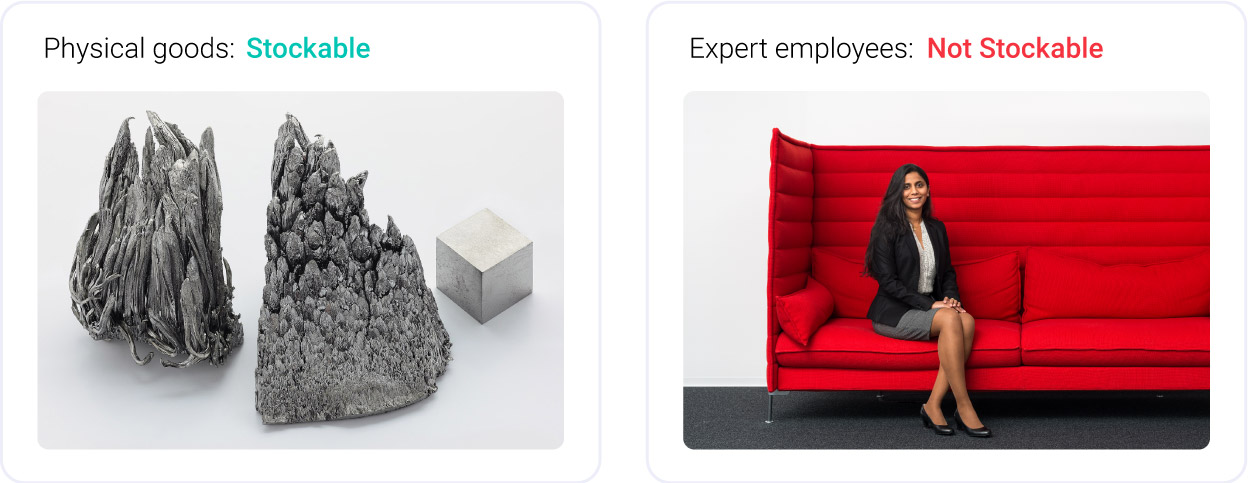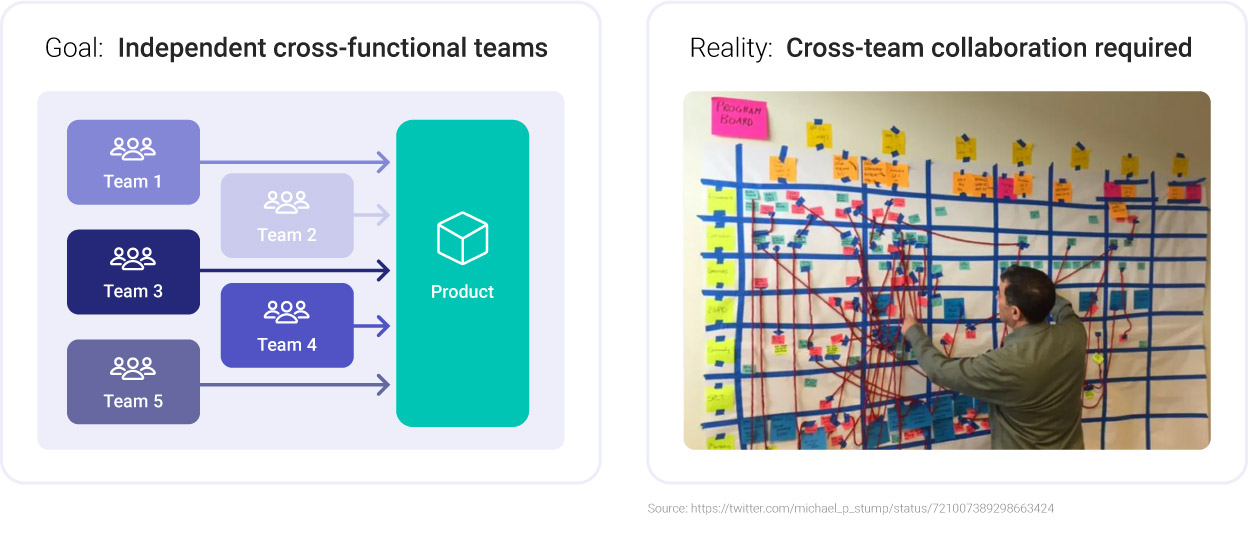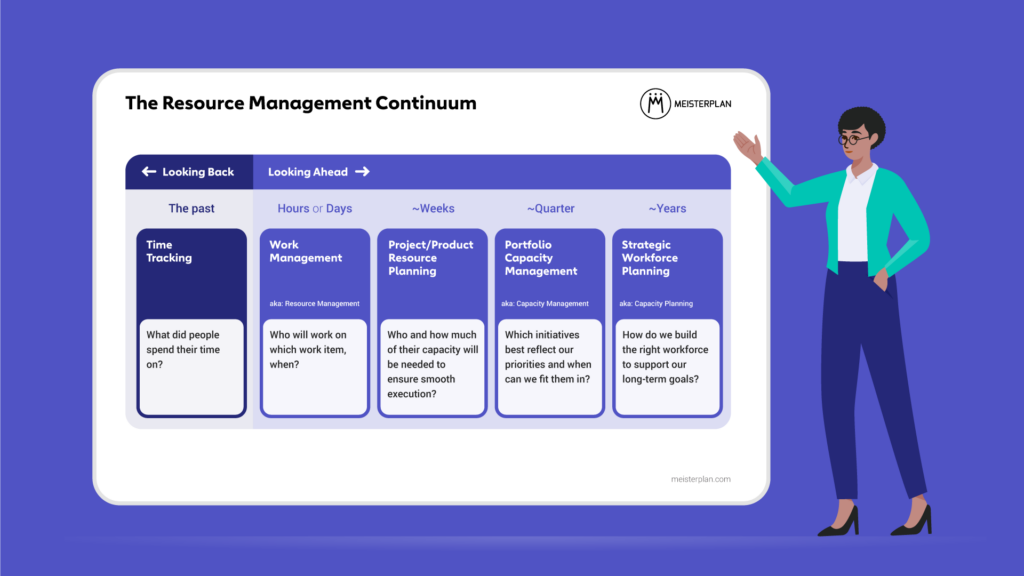We can all agree that it’s hard to manage multiple projects at the same time. As a value oriented PMO, managing your resources is absolutely critical to keeping your projects on track. But resource management is an easily misunderstood field – one we’ve even written about before. In this blog post, I will try to give you a simple, straightforward way to organize the resource management playing field to address your specific questions and goals using what we call the Resource Management Continuum.
By the way:
I gave a presentation on this topic at last year’s PMOUNCON – take a look.
Table of Contents
What Are Resources and Why Are They So Important?
Let’s set the groundwork first. For this blog post, we are only considering human resources – the people working on projects – not the facilities you might be using, equipment you might need or funds that need to be available. Of course, these other factors are important, but our primary focus here is on people. Expert employees are your most important resource.
Why do we call employees resources?
Why is resource management so important? A 2018 study from the Harvard Business Review examined the top barriers to successful strategy implementation. Of course, proper professional project management is important, and you can see that it ranked eighth overall. What’s more important is that typically there are just too many initiatives that we are trying to drive at the same time. With that in mind, how do we manage our resources across all of those initiatives?
It all starts with people. From a theoretical perspective, how is managing people different from managing physical goods? Well, for one, you simply can’t stock employees. For example, you can buy materials in bulk to store in a warehouse and grab whenever you need some. On the other hand, if an employee doesn’t work today or spends their time on something else, that time cannot be stocked to use tomorrow – that time is gone.

In the past, people were viewed as a commodity, a replaceable good. Today, we know that individuals really make a difference. But sometimes a single person, or a small team, can be the bottleneck that slows down the entire organization.
Agile Didn’t Solve This
Even Agile environments are not immune to this. With agile, one of the main goals is to deliver working software, but a key element was introducing independent, cross-functional teams. These may help progress toward the goal, but there are cross-team dependencies to take into account, which means having to wait for other teams to complete their work. And that’s not even considering the regular exchanging of experts between teams.

Who Does What and When?
So we need to solve the problem. Do we need to do resource management? Resource planning? Allocation scheduling? Wait, what is the problem exactly?
We want to ask the question: Who does what and when? Super simple, isn’t it? But very hard to answer. And it isn’t all that straightforward. The question could be: what are people doing today? Or next week, or next sprint, or next quarter…? Or even next year?
What Have You Accomplished and What Are Your Goals?
Well, let’s start from the beginning. What have people been working on? When you look to the past, you want to look back at what you’ve done; for the future, you look at different time ranges where you are trying to understand what people should be working on. And then it’s time to ask some more specific questions – essentially variations of “who does what and when?”. The image below shows a generalized continuum with questions to ask yourself for each time interval.
You don’t necessarily plan based on individual tasks, do you? You just want to know if you have the people, and around when you’ll need them – in a week, or perhaps the week after? And then looking out a little further – whether that’s quarters, octals, or on a half-year basis – you want to ask yourself which initiatives best reflect your priorities. And, from a resource perspective, how can you fit them in? Especially when they’re dependent on other projects that are planned or underway. And then in the long term, how do you build the right workforce to support your long-term goals?
So you see, there are quite a few very different questions to ask all based on “who does what and when?”. Naturally, people use many words to categorize those questions. some that we choose to use: time tracking, work management, project or product resource planning, portfolio capacity management, and strategic workforce planning. But don’t get hung up on the buzzwords! What’s important is what you want to achieve, and what questions you want answered.
Why Are These Questions Necessary?
Once you’ve identified the main questions you want to answer, the next step is to investigate your motivation. Ask yourself: Why do you want to know at all?
Example 1: Looking Back
In the time tracking context, you want to know what people spent their time on. This is resource management, isn’t it? So why do you want to know? The questions that are behind this differ a lot depending on your specific situation. The following table provides some specific examples of questions you might ask, and why you might ask them.
| If you ask yourself… | …you probably want to improve… | …with the end goal of… |
|---|---|---|
| Are we staying within our time budget? | Budget Control | Efficiency On-time delivery |
| How many hours can I charge? | Invoicing | Fewer disputes Faster payment processing |
| Are people actually working on what was agreed? | Progress Monitoring | Early issue identification Stakeholder communication |
| What’s the likely completion date considering the effort to date? | Forecasting | Risk mitigation Expectation management |
| What are people spending their time on? | Productivity Analysis | Data-driven decision-making for re-allocation of resources |
| How accurate were our estimates? | Estimating | Increased predictability Better investment decisions |
| How are individuals doing towards their productivity KPIs? | Performance Evaluation | Objective Assessment Continuous Improvement |
Let’s break the first example down…
You want to know if you’re staying within your time budget. Why? Because you want to improve budget control. You don’t want to spend too much time or too much effort on anything; you want to be efficient and to deliver on time.
A totally different use case:
You might want to ask how many hours you can charge in a professional services context. You probably want to improve invoicing, and you’re charging hours already because you are a professional services business. So, you want to be more detailed on how many hours you can charge and how you can improve on this, potentially with a goal of having less disputes with your external or internal customers and receiving faster payments.
Another possible solution:
Another possible situation: Are you monitoring whether people are actually working on what was agreed? You want to improve progress on specific initiatives with the end goal of identifying issues – and if nobody’s working on this, then no progress is being made! And you can use this information to work with stakeholders to either expedite things or to communicate new deadlines.
There are many, many more examples where you should be looking at why it is you want to introduce time tracking. What is the end goal? What are other ways to achieve it? Would introducing time tracking be meaningful to reach your goal, or would it just be a strain on your organization? If you decide that it would be valuable, then look at how time tracking needs to be different depending on the questions you ask and the level of granularity you need.
Example 2: Looking Ahead
Now let’s look a few months ahead, or maybe even a few quarters. What initiatives do you want to drive and how can we best fit them in?
| If you ask yourself… | …you probably want to improve… | …with the end goal of… |
|---|---|---|
| When can we slot this project in? | Forecasting | Reliable commitments to project start dates |
| What’s a realistic delivery date for this initiative? | Forecasting | Reliable commitments to project end dates |
| What are the tradeoffs of fast-tracking this initiative? | Decision-making | A specific business outcome |
| How do allocations and timelines align with strategic goals? | Prioritization | Effectiveness |
| How will my resource utilization change in the upcoming months? | Utilization rates | Efficiency |
| How can we manage the resource bottlenecks we run into? | Flow | Throughput |
Let’s start with a simple question:
When can you slot a new project in? You might want to improve forecasting because you want to tell your customers when projects can begin. But wouldn’t it be even more meaningful to ask about a realistic delivery date for that project? That is, forecasting an end date rather than the start date.
Or, imagine this…
Your boss walks in and says “this is the most important thing that we need to do now. Priority number one.” You need to know what the trade-off would be to fast-track the newly prioritized initiative. And you want to improve decision making for a specific business outcome, such as time to market, revenue, or operational KPIs.
No matter the case, one thing is clear – if you want to introduce resource management, pick the question that you have to answer and the goal that your stakeholders want you to pursue.
What Are Your Priorities?
The main takeaway here is to build your resource management profile based on your specific needs, not based on buzzwords. Keep working on the main questions and asking: “what are the questions along the business management continuum that would help us most in the next quarter, or the next year, to better meet our stakeholders’ expectations?”
As an example, here is my 2024 target profile after considering what we want to achieve.
What might your target profile look like?
I suggest that you ask yourself whether your organization is aware that resource management is critical for your success. Which questions would you answer first to create the most impact for your stakeholders? And what’s the one question that you would start answering today?
I hope this blog post gives you some insight on why managing resources is important for PMOs that want to deliver value reliably. Human resources are a major factor in project management contexts, and I was hopefully able to provide a simple view on what resource management could look like for your organization.
Read Next

Riedel Conquers Hybrid R&D Projects with Meisterplan’s Strategic Resource Planning



